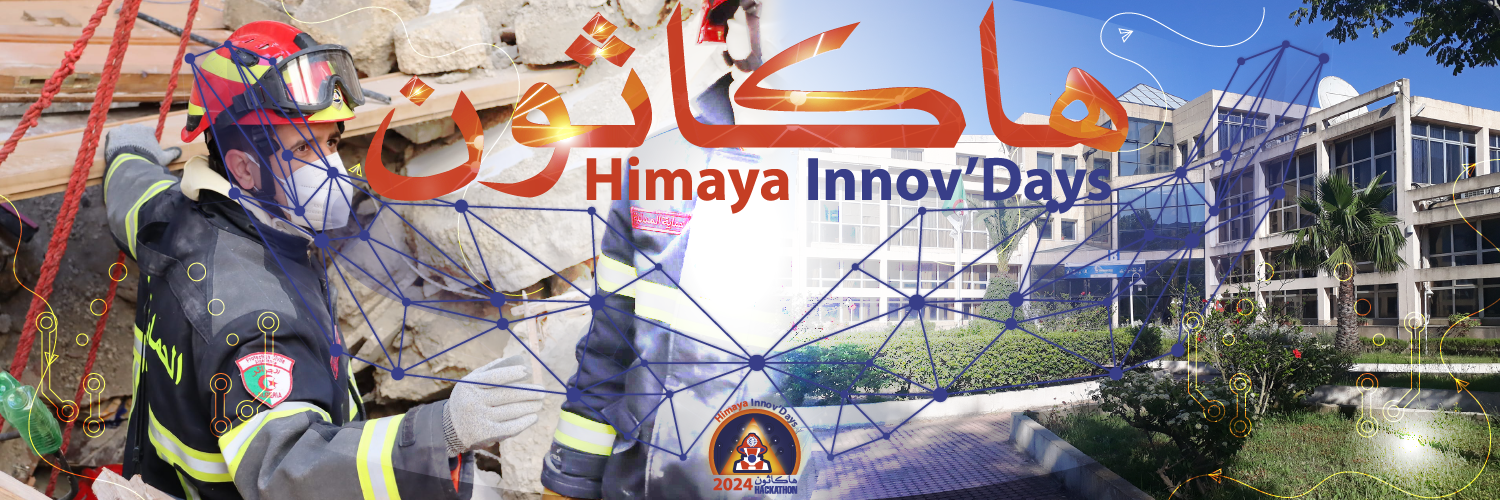
Main tracks
Track 1: Forest fires
In Algeria the issue of forest fires is acute due to their devastating impact, the combination of forest scarcity and the threats of desertification amplifies the disastrous impact of these fires. Algeria has only 4.1 million hectares of forests or an afforestation rate of 1.76%, but the high frequency of fires that occur with a return interval of less than 10 years has a catastrophic impact on both ecological and human levels. Forest fires thus represent a serious threat to the economy, the environment, and, unfortunately, too often, to human lives. In order to better understand the spread and evolution of these fires, to identify areas at risk, to provide support to civil protection teams engaged in the fight against flames, and ultimately, to save lives, new technologies are positioned as valuable tools to optimize prevention and control approaches and prioritize interventions.
Track 2: Flooding
Floods are a major risk on the national territory. Once triggered, the flood phenomenon quickly becomes difficult to control and this can lead to significant property damage and consequent loss of life. Providing predictive mapping of floods and an accurate assessment of their impacts on the population, buildings and critical infrastructure become necessary to control these disasters and limit their impacts. Exploitation of modern technologies such as artificial intelligence, computer vision (image analysis) and numerical modeling can provide access to new environmental measures and provide new information, not only to help predict immediate flood threats, but also to improve prevention strategies, of anticipation and intervention.
Track 3: Psychological support for disaster victims
This track aims at exploring innovative solutions to provide effective and accessible psychological support to people affected by disasters. The aim is to develop innovative technological solutions that enable first responders to provide immediate psychological support, as well as longer-term monitoring of disaster-related trauma. Participants are encouraged to think creatively and integrate technologies such as artificial intelligence (AI), virtual or augmented reality, as well as data analysis, to design customized solutions tailored to the specific needs of victims of disaster-related trauma.
Track 4: Open track
Other natural and technological risks
This axis deliberately left open, aims to stimulate the creativity of participants by exploring solutions related to societal challenges such as technological risks or other emerging natural risks. The goal is to foster innovative ideas and approaches that can better understand, prevent and mitigate these risks while focusing on integrated and holistic solutions. Participants are encouraged to take a holistic view to build resilience to the multiple challenges of these emerging risks.
Technologies of interest
- Artificial Intelligence (machine learning, deep learning, generative AI, etc.);
- Mobile applications and digital platforms for coordination and communication between disaster management actors;
- Advanced networks: IoT, 5G, ad hoc networks, remote sensing, etc.
- Geographic Information Systems (GIS);
- Open Source/Open Data/Open Innovation
- Social networks, sentiment analysis and crowdsourcing;
- Evacuation and rescue systems;
- Big Data Analytics and Data Mining
- Virtual Reality/Augmented Reality/Extended Reality;
- Simulation of the effects of natural and technological disasters (forest fires, floods, earthquakes, technological hazards, etc.);
- Disaster modeling and simulation;
- Autonomous vehicles (drones) and robots;
- Remote Sensing and Satellite Imagery;
- Early warning systems;
- Digital twins
